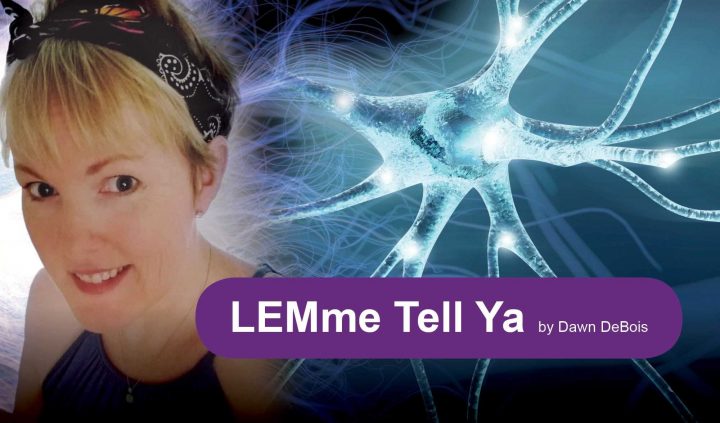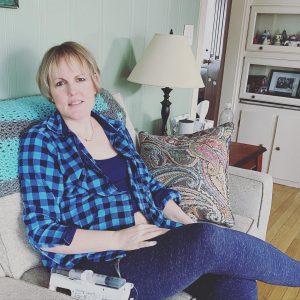I Have 12 More Days in the Month, Thanks to Subcutaneous Treatment
Written by |

People often comment that there aren’t enough days in the week or hours in the day. But I’ve found myself looking at a dozen more days in my month!
How am I finding 12 extra days in a month? It’s simple: I have changed how my body receives immunoglobulin G (IgG), which many with Lambert-Eaton myasthenic syndrome (LEMS) refer to as liquid gold. Instead of receiving it as an intravenous administration, I’m starting to receive IgG subcutaneously.
I have been vocal about how much my intravenous immunoglobulin (IVIG) replacement therapy treatments have helped me to enjoy life again. The side effects are a part of the package that also returned my ability to swallow, the inflection in my voice, and the maintenance of my strength and energy. I have had only one LEMS flare since starting IVIG two years ago, and that was brought on by my treatment being delayed by an IVIG shortage last summer.
During conference calls about the shortage, I first considered that an alternate form of receiving IgG might be a viable option. Until then, my life revolved around my treatment and recovery every fourth week, with my body feeling the weakening of the product like clockwork at the end of the 3½-week half-life. But I learned that Hizentra (immune globulin) was the first subcutaneous product indicated for autoimmune dosing of IgG.
Subcutaneous administration has been utilized for patients on IgG who don’t need the extreme doses that autoimmune patients need. Primary immunodeficiency patients are among those who have benefited from small IgG doses subcutaneously via tiny needles. Those patients can’t chance ineffectiveness due to the half-life; without the product working for them, they have no immune defenses.
Autoimmune patients who use IVIG need higher doses to keep their rogue antibodies from attacking. Hizentra had successful clinical trials for chronic inflammatory demyelinating polyneuropathy (CIDP) patient dosing and thus gained the indication. I learned about this thanks to the IVIG shortage. There is indeed a silver lining in every cloud.
I started discussing the subcutaneous option with my neurologist. My symptom flare during the shortage verified how well IgG was working to keep my LEMS managed. But after learning there may be a way to minimize the side effects and the disruption an IVIG schedule has on my life, I argued my case.
“I am ready to not schedule my entire life around my IVIG treatment schedule,” I said. Every concert announcement, travel opportunity, or family gathering sent me to my IVIG calendar before I would commit. My life revolved around knowing that every fourth week I would be infusing for three days and recovering for the next four.
I also said I would need a port if I continued IVIG. My nurses were having a harder time accessing my veins. IgG is thick, and monthly infusions take a toll on my veins. A port would be another unwelcome reminder of my chronic illness, and I didn’t want to add the risk of infection.
Finally, I told my neurologist, “I’m ready for the highs and lows of treatment to be at an even level.” I feel like a million bucks once the side effects from treatment have subsided, but I feel a downslide at the 3½-week half-life. I can guarantee five days of feeling subpar prior to my next infusion. If the levels of IgG could be kept at a constant in my body, those highs and lows may level out.
My neurologist agreed to let me try it even though she hadn’t had a LEMS or CIDP patient use the subcutaneous option. Surprisingly, her prior authorization for the off-label request for me to use Hizentra was approved without needing a peer-to-peer review.
I had my first training and home infusion two days ago. I was amazed by how quick and easy it was. A follow-up column about the process and how it is working for me is in the works!
Meantime, I plan to make good use of my 12 additional symptom-free days a month! How would you use 12 more days a month?
***
Note: Lambert-Eaton News is strictly a news and information website about the disease. It does not provide medical advice, diagnosis, or treatment. This content is not intended to be a substitute for professional medical advice, diagnosis, or treatment. Always seek the advice of your physician or other qualified health provider with any questions you may have regarding a medical condition. Never disregard professional medical advice or delay in seeking it because of something you have read on this website. The opinions expressed in this column are not those of Lambert-Eaton News or its parent company, Bionews Services, and are intended to spark discussion about issues pertaining to Lambert-Eaton myasthenia.






Taushia Wright
Do you think this treatment would work with Generalized Myastenia Gravis?
Dawn DeBois
Hi Taushia,
If someone with Generalized Myasthenia Gravis has responded well to IVIG, then yes, from my understanding, based on the new autoimmune indication with Hizentra, it should work as well. Because I responded favorably to IVIG, and truly went downhill during the shortage last summer, my insurance had no issue with giving me a shot at doing sub q.
I got 90 grams a month on IVIG and now get 19 grams a week sub q. The big thing that has helped me is that I started sub q the week following an IVIG treatment so that my levels were already up where they needed to be in order to keep my antibodies at bay.
Of course, your neurologist would be the best reference for this; but my neurologist hadn't had anyone try sub q for autoimmune dosing until I asked for it. In the current climate with COVID, it's a request that any neurologist should understand.
Good luck!